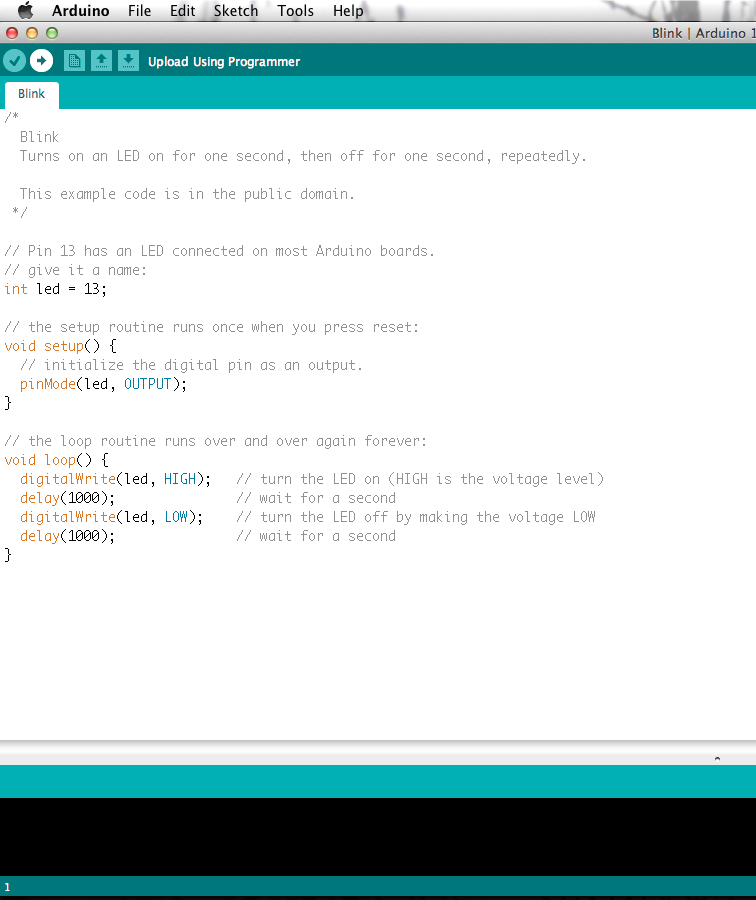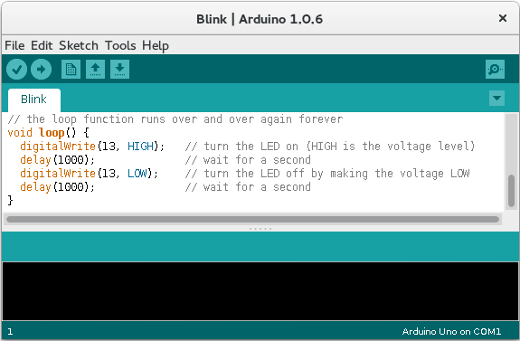The Visual Studio for Mac editor supports powerful built-in refactoring options such as Extract Method and Rename, accessible via the Quick Actions menu. Integrated Source Control. Manage your code in Git or SVN repos hosted by any provider, including GitHub and Azure DevOps. Review diffs, stage files, and make commits from inside Visual Studio. Oct 16, 2019 Xcode is also another famous integrated development environment (IDE) software created by Apple. Available in mac app store absolutely free of charge. It only runs on Mac OS (operating system). Mainly used to build OS X and iOS. It is packed with all types of editors, compilers and other necessary tools required for the development.
Whether you're a seasoned developer or you're just learning how to code, staying on top of the latest integrated development environments is a constant challenge. Truthfully, there is no best IDE for everyone. The best IDE is the IDE that works best for you, so below is a selection of 10 of the most popular choices to help you figure out which one to pick.
A text editor is at the core of a developer’s toolbox, but it doesn't usually work alone. Work with Git and GitHub directly from Atom with the GitHub package. Create new branches, stage and commit, push and pull, resolve merge conflicts, view pull requests and more—all from within your editor. Jul 29, 2019 10. Espresso is an advanced web editor built for Mac users to build delightful, speedy, and innovative websites as it combines virtually all the tools they will need into a single working environment such as CSSEdit tools, Server sync, a Navigator, Live Preview with Browser Xray, Dynamo auto-building, and an exceptionally beautiful UI compliant with the macOS aesthetic. Visual Studio 2019 for Mac. Develop apps and games for iOS, Android and using.NET. Download Visual Studio for Mac. Create and deploy scalable, performant apps using.NET and C# on the Mac.
How is an IDE different from a text editor?
An IDE is more than a simple text editor. While code-centric text editors such as Sublime or Atom offer many convenient features such as syntax highlighting, customizable interfaces and extensive navigation tools, they only allow you to write code. To make functioning applications, you at least need a compiler and a debugger.
An IDE includes all of these components and then more. Some IDEs come with additional tools for automating, testing and visualizing the development process. The term 'integrated development environment' means that you have everything you need to turn code into functioning apps and programs.
Which is the best IDE on the market? The better question is: 'Which is the best IDE for my purposes?' General factors to consider when choosing the best IDE include the languages it can support, ease of use and cost.
Check out the list below outlining the features and drawbacks of each of the top 10 best IDE software programs.
1. Microsoft Visual Studio

Microsoft Visual Studio is a premium IDE ranging in price from $699 - $2,900 depending on the edition and licensing. The many editions of this IDE are capable of creating all types of programs ranging from web applications to mobile apps to video games. This series of software includes tons of tools for compatibility testing so that you can see how your apps run on more than 300 devices and browsers. Thanks to its flexibility, Visual Studio is a great tool for both students and professionals.
Languages supported: ASP.NET, DHTML, JavaScript, JScript, Visual Basic, Visual C#, Visual C++, Visual F#, XAML and more
Notable features:
- A massive library of extensions that is always growing
- IntelliSense
- Customizable dashboard and dockable windows
- Straightforward workflow and file hierarchy
- Insights for monitoring performance in real time
- Automation tools
- Easy refactoring and code snippet insertion
- Split screen support
- Error list that allows debugging while building
- Approval checks when deploying apps via ClickOnce, Windows Installer or Publish Wizard
Drawbacks: Because the Visual Studio is a heavyweight IDE, it takes considerable resources to open and run, so making simple edits may be time consuming on some devices. For simpler task, it may be easier to use a lightweight editor.
2. NetBeans
Netbeans is a free and open source IDE. Ideal for editing existing projects or starting from scratch, NetBeans boasts a simple drag-and-drop interface that comes with a myriad of convenient project templates. It is primarily used to develop Java applications, but you can download bundles that support other languages.
Languages supported: C, C++, C++11, Fortan, HTML 5, Java, PHP and more
Notable features:
- Intuitive drag-and-drop interface
- Dynamic and static libraries
- Multi-session GNU debugger integration with code assistance
- Allows for remote development
- Compatible with Windows, Linux, OS X, and Solaris platforms
- Supports Qt Toolkit
- Supports Fortan and Assembler files
- Supports a number of compilers including CLang/LLVM, Cygwin, GNU, MinGW and Oracle Solaris Studio
Drawbacks: This free IDE consumes a lot of memory, so it may perform sluggishly on some machines.
3. PyCharm
PyCharm is developed by the folks over at Jet Brains and provides users a free Community Edition, 30 day free trial for the Professional Edition, $213 - $690 for an annual subscription. Comprehensive code assistance and analysis make PyCharm the best IDE for Python programmers of all ability levels. PyCharm also supports other languages and works on multiple platforms, so practically anyone can use it.
Languages supported: AngularJS, Coffee Script, CSS, Cython, HTML, JavaScript, Node.js, Python, TypeScript and template languages

Notable features:
- Compatible with Windows, Linux, and Mac OS
- Comes with Django IDE
- Easy to integrate with Git, Mercurial and SVN
- Customizable interface with VIM emulation
- JavaScript, Python and Django debuggers
- Supports Google App Engine
Drawbacks: Users complain that PyCharm has some bugs, such as the autocomplete feature occasionally not working, which can be a minor inconvenience.
4. IntelliJ IDEA
IntelliJ IDEA is another IDE developed by Jet Brains. This IDE offers users a free Community Edition, 30 day free trial for the Ultimate Edition, and costs $533 - $693 annually depending on features. IntelliJ IDEA, which supports Java 8 and Java EE 7, comes with extensive tools to develop mobile apps and enterprise technologies for different platforms. When it comes to cost, IntelliJ is a real deal due to the massive of list of features you get.
Languages supported: AngularJS, CoffeeScript, CS, HTML, JavaScript, Less, Node JS, PHP, Python, Ruby, Sass, TypeScript and more.
Notable features:
- Extensive database editor and UML designer
- Supports multiple build systems
- Test runner UI
- Code coverage
- Git integration
- Supports Google App Engine, Grails, GWT, Hibernate, Java EE, OSGi, Play, Spring, Struts and more
- Deployment and debugging tools for most application servers
- Intelligent text editors for HTML, CSS, and Java
- Integrated version control
- AIR Mobile supports Android and iOS devices
Drawbacks: This IDE comes with a learning curve, so it may not the best for beginners. There are many shortcuts to remember, and some users complain about the clunky UI.
5. Eclipse
Eclipse is a free and flexible open source editor useful for beginners and pros alike. Originally a Java environment, Eclipse now has a wide range of capabilities thanks to a large number of plugins and extensions. In addition to debugging tools and Git/CVS support, the standard edition of Eclipse comes with Java and Plugin Development Tooling. If that's not enough for you, there is plenty of other packages to choose from that include tools for charting, modeling, reporting, testing and building GUIs. The Eclipse Marketplace Client gives users access to a treasure trove of plugins and information supplied by an expanding community of developers.
Languages supported: C, C++, Java, Perl, PHP, Python, Ruby and more
Notable features:
- A plethora of package solutions allowing for multi-language support
- Java IDE enhancements such as hierarchical views of nested projects with customizable perspectives
- Task-focused interface including system-tray notifications
- Automated error reporting
- Tooling options for JEE projects
- JUnit integration
Drawbacks: While Eclipse is very versatile software, the many options may be intimidating to newcomers. Eclipse doesn't have all of the same features as IntelliJ IDEA, but it is open source.
6. Code::Blocks

Code::Blocks is another popular free and open source option. It is a highly customizable IDE that performs consistently across all platforms, so it is great for developers who frequently switch between workspaces. The plug-in framework lets users tweak this IDE to meet their needs.
Languages supported: C, C++, Fortran
Notable features:
- Easy-to-navigate tabbed interface including a list of open files
- Compatible with Linux, Mac, and Windows
- Written in C++
- Requires no interpreted or proprietary languages
- Supports many pre-built and custom-built plugins
- Supports multiple compilers including GCC, MSVC++, clang and more
- Debugger that includes breakpoint support
- Text editor with syntax highlighting and autocomplete
- Customizable external tools
- Simple task management tools ideal for multiple users
Drawbacks: Though Code::Blocks comes with many features, it is a relatively lightweight IDE, so it's not suited for larger projects. It is a great tool for beginners, but advanced coders may be frustrated with the limitations.
7. Aptana Studio 3
Perhaps the most powerful of the open source IDEs, Aptana Studio 3 is a massive improvement over its predecessors. Since Aptana Studio 3 supports most browser specs, compatibility challenges are minimal, so users can quickly develop, test and deploy web apps from this single IDE.
Languages supported: HTML5, CSS3, JavaScript, Ruby, Rails, PHP, and Python
Notable features:
- Code assist for CSS, HTML, JavaScript, PHP and Ruby
- Deployment wizard with simple setup and multiple protocols including Capistrano, FTP, FTPS and SFTP
- Automatically sends Ruby and Rails applications to hosting services
- Integrated debuggers for Ruby and Rails and JavaScript
- Git integration
- Easily accessible command line terminal with hundreds of commands
- String custom commands to extend capabilities
Drawbacks: Although Aptana works well for students juggling multiple small projects, it has stability issues and runs slowly, so professional developers might prefer a more powerful IDE.
8. Komodo
Komodo offers a free 21-day trial and costs between $99 - $1615 depending on the edition and licensing. Practically any programmer can use Komodo because it supports most major programming languages. The streamlined interface allows for advanced editing, and small perks like the Syntax Checker and single-step debugging make Komodo one of the most popular IDEs for web and mobile development.
Languages supported: CSS, Go, JavaScript, HTML, NodeJS, PerlPHP, Python, Ruby, Tcl and more.
Notable features:
- Customizable UI including split view and multi-window editing
- Version control integration for Bazaar, CVS, Git, Mercurial, Perforce and Subversion
- Python and PHP code profiling
- Convenient code collaboration for multi-user editing
- Deploy to the cloud thanks to Stackato PaaS
- Graphical debugging for NodeJS, Perl, PHP, Python, Ruby and Tcl
- Autocomplete and refactoring
- Consistent performance across Mac, Linux and Windows platforms
- Many add-ons allow a high level of customization
Drawbacks: One of the few complaints about Komodo is that the free version doesn't enable all of the features, but the premium version is still considered well-worth the cost.
9. RubyMine
RubyMine is another premium IDE, developed by Jet Brains, that offers a 30 day free trial and costs $210 - 687 annually. As its name implies, RubyMine is a favorite among Ruby enthusiasts; however, this IDE supports other programming languages as well. Easy navigation, logical workflow organization, and compatibility with most platforms make RubyMine a workplace favorite.
Languages supported: CoffeeScript, CSS, HAML, HTML, JavaScript, Less, Ruby and Rails, Ruby and Sass
Notable features:
- Code snippets, autocomplete and automatic refactoring
- Project tree allows for quick code analysis
- Rails Models Diagram
- Rails Project View
- RubyMotion allows for iOS development
- Stack support includes Bundler, pik, rbenv, RVM and more
- JavaScript, CoffeeScript and Ruby debuggers
- Integration with CVS, Git, Mercurial, Perforce and Subversion
- Bundled keyboard schemes
Drawbacks: Your machine needs at least 4GB of RAM for RubyMine to run smoothly. Some users also complain about the lack of GUI customization options.
10. Xcode
Xcode IDE is free, open source, and part of Xcode, which is a collection of tools for making apps for Apple devices such as the iPad, iPhone and Mac. Integration with Cocoa Touch makes development in the Apple environment a breeze, and you can enable services such as Game Center or Passbook with a single mouse click. Built-in communication with the developer's website helps users produce fully functioning apps on the fly.
Languages supported: AppleScript, C, C++, Java, Objective-C
Notable features:
- UI controls can be easily connected with implementation code
- Apple LLVM compiler scans code offers advice for addressing performance issues
- Assistant function allows for split-code workspace
- Jump bar permits quick navigation
- Interface Builder lets user build prototypes without writing any code
- UI and source code can be graphically connected to sketch complex interface prototypes in just minutes
- Version Editor includes log files and commit timeline
- Branch and merge for distributed teams
- Test Navigator lets you quickly test applications at any point during development
- Automatically builds, analyzes, tests, and archives projects thanks to Integration with OX X server
- Workflow is highly customizable with Tabs, Behaviors, and Snippets
- Instrument library and asset catalog
Drawbacks: You obviously need an Apple machine to run Xcode, and keep in mind that you need a developers license to upload apps to the Apple Store.
Finding the best IDE for your needs
As you can see, the best IDE for you depends on your operating system, your programming language of choice and which platforms you wish to develop for. Finding the right fit is really an ongoing process. Your options are practically limitless, so it may be helpful to make a list of your preferences and then searching for the IDE that most closely matches your needs. While every developer has their favorite software, don't be afraid to branch out as the world of IDEs is always expanding.
Did we miss any important IDEs? Let us know in the comments section what your favorite IDE is.
Arduino
Web Editor
Start coding online with the Arduino Web Editor, save your sketches in the cloud, and always have the most up-to-date version of the IDE, including all the contributed libraries and support for new Arduino boards.
This software can be used with any Arduino board.
Refer to the Getting Started page for Installation instructions.
Windows Installer, for Windows 7 and up
Windows ZIP file for non admin install
Linux 32 bits
Linux 64 bits
Linux ARM 32 bits
Linux ARM 64 bits
Release Notes
Source Code
Checksums(sha512)
Ide Software For C++
HOURLY BUILDS Download a preview of the incoming release with the most updated features and bugfixes. 14 April 2015, 08:41:16 CET | BETA BUILDS Download the Beta Version of the Arduino IDE with experimental features. This version should NOT be used in production. |
Download the previous version of the current release the classic Arduino 1.0.x, or the Arduino 1.5.x Beta version.
Best Ide For Mac
All the Arduino 00xx versions are also available for download. The Arduino IDE can be used on Windows, Linux (both 32 and 64 bits), and Mac OS X.
Active development of the Arduino software is hosted by GitHub. See the instructions for building the code.
The source code archives of the latest release are available here. The archives are PGP-signed so they can be verified using this gpg key.
Advanced Installation Procedure: This procedure is only recommended to advanced users who wish to completely re-flash the Yún including its U-Boot bootloader. These instructions on reflashing the base images are for reference only. Following them will void your Yún's warranty.
Packages List
The list of available packages for the Yún is available here.
See the list of changes.
By downloading the software from this page, you agree to the specified terms.
